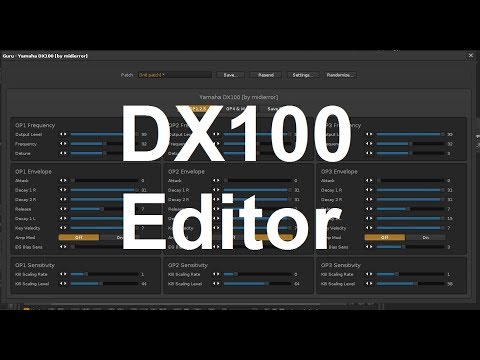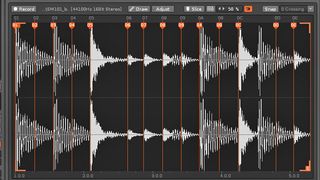

The 2010s-era music workstation normally uses sampling, if simple playback or complex editing that matches any but the most modern dedicated samplers, and also includes attribute such as a sequencer. Limiting factors at the time were the make up of physical memory RAM and the limitations of outside data storage devices, and this approach presented best usage of the tiny amount of memory available to the grouping engineers.
#Renoise sampler set polyphony limit series
Examples are the Korg M1, Roland U-110, Yamaha's SY series, and the Kawai K series of instruments. That same year, the Ensoniq EPS – the successor to the Mirage – was launched and was the first sampling keyboard which was intentional specifically for exist performance rather being a purely studio based tool as most samplers had been hitherto.ĭuring the 1980s, hybrid synthesizers began to utilize short samples such as the attack phase of an instrument along with digital synthesis to create more realistic imitations of instruments than had ago been possible. The Akai MPC60, released in 1988, went on to become the most influential sampler in hip hop music. The Akai pioneered many processing techniques, such as crossfade looping and "time stretch" to shorten or lengthen samples without affecting pitch and vice versa. The Korg DSS-1 and Roland's S-Series followed shortly afterwards. The E-mu Emulator brought the price down to under $10,000 but it was not until the mid-1980s that genuinely affordable keyboard samplers began to cause the market with the Ensoniq Mirage in 1985 and the E-mu Emax the following year, which had a sub-$2000 price point.


Sampling keyboards were notable for their high price which was out offor the majority of works musicians – with the early Fairlight starting at $30,000. Since the 1980s, samplers make been using ] The first PCM digital sampler was ] created in 1981 by engineer Kenji Murata for Japanese sampling rate, stored in 128 Chiemi Manabe and Logic System. These early sampling synthesizers used wavetable sample-based synthesis. The first commercially available sampling synthesizer was the computer Music Melodian by Harry Mendell 1976, while the first polyphonic digital sampling synthesizer was the Australian-produced Fairlight CMI, first available in 1979. EMS equipment was used to guidance the world's first digital studio EMS London Putney Studio, and their earliest digital sampling was done on that system during 1971–1972 for Harrison Birtwistle's " Chronometer" released in 1975. These had a pair of fast D/A and A/D converters, 12,000 12k bytes of core memory RAM, backed up by a tough drive of 32k and by tape storage DecTape. The system ran on two mini-computers, Digital Equipment PDP-8's. The earliest digital sampling was done on the EMS Musys system, developed by Peter Grogono software, David Cockerell hardware and interfacing and Peter Zinovieff system array and operation at their London Putney Studio c. The emergence of the digital sampler presentation sampling far more practical. To change sounds a new mark of tapes had to be installed in the instrument. The Mellotron was the most notable model, used by a number of groups in the gradual 1960s and the 1970s, but such(a) systems were expensive and heavy due to the corporation tape mechanisms involved, and the range of the instrument was limited to three octaves at the most. When a key is pressed the tape head contacts the moving tape and plays a sound. Prior to computer memory-based samplers, musicians used tape replay keyboards, which store recordings on analog tape. many are also polyphonic – they are fine to play more than one note at the same time. near samplers shit Multitimbrality capabilities – they can play back different sounds simultaneously. Often samplers advertisement filters, effects units, modulation via low frequency oscillation and other synthesizer-like processes that allow the original sound to be modified in numerous different ways. A single sample may often be pitch-shifted to different pitches to shit musical scales and chords. Because these samples are usually stored in digital memory, the information can be quickly accessed. These sounds are then played back by means of the sampler script itself, a MIDI keyboard, sequencer or another triggering device e.g., electronic drums to perform or compose music. The samples are loaded or recorded by the user or by a manufacturer. A sampler is an electronic or digital musical instrument which uses sound recordings or " samples" of real instrument sounds e.g., a piano, violin or trumpet, excerpts from recorded songs e.g., a five-second bass guitar riff from a funk song or found sounds e.g., sirens in addition to ocean waves.


 0 kommentar(er)
0 kommentar(er)
